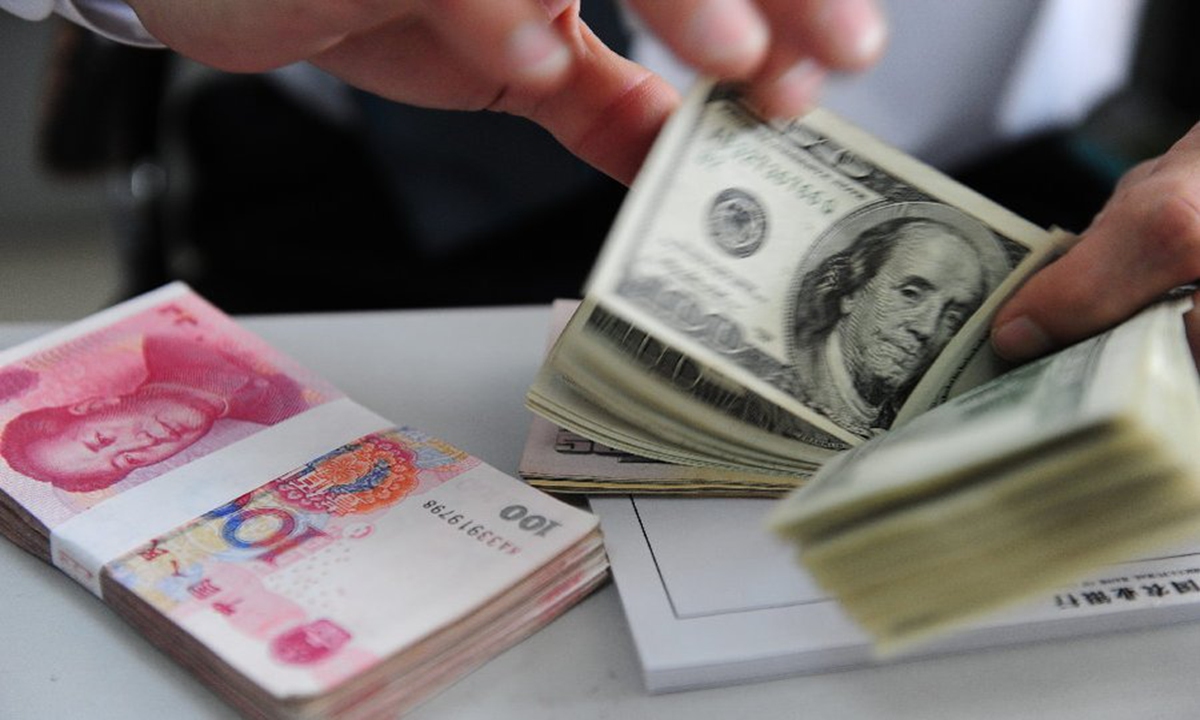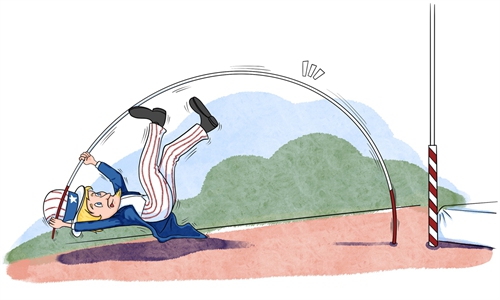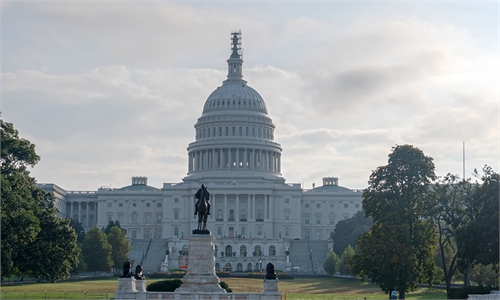
File photo
China's central bank on Monday announced to cut the reserve requirement ratio (RRR) by 50 basis points for all financial institutions, while on the other side of the Pacific, the US Federal Reserve is widely anticipated to tighten its monetary policy.The divergence in China's monetary policy from that of the US not only reflects the connection and interaction of their policies, but also highlights the ample room China has for macro-control to ensure economic stability in its rivalry with the US.
While an adjustment to China's macro policy is not unexpected given the downward pressure on its economy, the RRR cut, which is estimated to inject 1.2 trillion yuan ($188 billion) in long-term liquidity into the economy, still came as a surprise in terms of its timing. Based on the experience of the previous years, the central bank usually lowers the RRR at the beginning of the year to release the liquidity for banks' credit planning. And it is also rare for the adjustment to be announced before this year's Central Economic Work Conference.
The timing of the monetary policy adjustment has something to do with the urgent need to stabilize economic growth. Stagnating economic growth could easily trigger systemic risks in China. Therefore, against the backdrop of a continuing economic slowdown, Chinese policymakers must ensure sound economic growth in order to guard against economic risks.
China's move to release liquidity could also be seen as an advanced preparation to tackle with potential shock of monetary policy shift to be made by the US. It is no secret that the Fed will speed up tapering its quantitative easing program, which is expected to lead to sharp money outflows from other economies. The prospect of this move has already forced many central banks to hike interest rates to protect their capital accounts.
Superficially, China's RRR cut will allow the banking system to supplement enough liquidity to hedge potential capital gap caused by the Fed's tightening. But actually, the move underscores the difference in the abilities of the two countries' governments in adjusting their economic policies.
The fact that China is able to make a liquidity easing adjustment ahead of the Fed's tapering, instead of passively following the US interest rate increase, shows that we still have measures in our own toolbox and have the room to adjust our monetary and fiscal policies in conformity with the country's domestic economic situation.
The ravaging pandemic has intensified competition between China and the US, and has fully displayed China's ability to break an attempted US encirclement campaign. A simple comparison of the economic performance of both countries during the pandemic shows clearly that China's systemic advantage and policy settings have helped the country avoid economic risks, which is why the US has become particularly aggressive in attacking China's system or playing up the strength of the US "democracy."
In fact, however, China is not trying to export its system or governance model to the world. What China has done during the pandemic has been a natural demonstration of its ability to regulate, control and adjust based on real world conditions. The policy flexibility is the result of China's development over the decades.
The US is now being forced by uncontrolled inflation to speed up the tapering, giving the impression that it is helpless and has no other choice when it comes to lifting its economy out of the pitfall. Its constant attacks on China are nothing but manifestation of its anxiety toward China's ample maneuver space. The world needs to be vigilant about the US exporting its economic crisis in the future.

File photo
China's central bank on Monday announced to cut the reserve requirement ratio (RRR) by 50 basis points for all financial institutions, while on the other side of the Pacific, the US Federal Reserve is widely anticipated to tighten its monetary policy.The divergence in China's monetary policy from that of the US not only reflects the connection and interaction of their policies, but also highlights the ample room China has for macro-control to ensure economic stability in its rivalry with the US.
While an adjustment to China's macro policy is not unexpected given the downward pressure on its economy, the RRR cut, which is estimated to inject 1.2 trillion yuan ($188 billion) in long-term liquidity into the economy, still came as a surprise in terms of its timing. Based on the experience of the previous years, the central bank usually lowers the RRR at the beginning of the year to release the liquidity for banks' credit planning. And it is also rare for the adjustment to be announced before this year's Central Economic Work Conference.
The timing of the monetary policy adjustment has something to do with the urgent need to stabilize economic growth. Stagnating economic growth could easily trigger systemic risks in China. Therefore, against the backdrop of a continuing economic slowdown, Chinese policymakers must ensure sound economic growth in order to guard against economic risks.
China's move to release liquidity could also be seen as an advanced preparation to tackle with potential shock of monetary policy shift to be made by the US. It is no secret that the Fed will speed up tapering its quantitative easing program, which is expected to lead to sharp money outflows from other economies. The prospect of this move has already forced many central banks to hike interest rates to protect their capital accounts.
Superficially, China's RRR cut will allow the banking system to supplement enough liquidity to hedge potential capital gap caused by the Fed's tightening. But actually, the move underscores the difference in the abilities of the two countries' governments in adjusting their economic policies.
The fact that China is able to make a liquidity easing adjustment ahead of the Fed's tapering, instead of passively following the US interest rate increase, shows that we still have measures in our own toolbox and have the room to adjust our monetary and fiscal policies in conformity with the country's domestic economic situation.
The ravaging pandemic has intensified competition between China and the US, and has fully displayed China's ability to break an attempted US encirclement campaign. A simple comparison of the economic performance of both countries during the pandemic shows clearly that China's systemic advantage and policy settings have helped the country avoid economic risks, which is why the US has become particularly aggressive in attacking China's system or playing up the strength of the US "democracy."
In fact, however, China is not trying to export its system or governance model to the world. What China has done during the pandemic has been a natural demonstration of its ability to regulate, control and adjust based on real world conditions. The policy flexibility is the result of China's development over the decades.
The US is now being forced by uncontrolled inflation to speed up the tapering, giving the impression that it is helpless and has no other choice when it comes to lifting its economy out of the pitfall. Its constant attacks on China are nothing but manifestation of its anxiety toward China's ample maneuver space. The world needs to be vigilant about the US exporting its economic crisis in the future.



